Offshore But Not Untouched:
Cordell Bank National Marine Sanctuary Releases Condition Report
By Rachel Plunkett
July 2023
Dense schools of rockfish swirl around towering rocks dotted in a colorful array of red, pink, and orange sponges and corals. This is Cordell Bank National Marine Sanctuary, a 1,286 square-mile protected area located offshore about 42 miles north of San Francisco. NOAA has just released the latest condition report outlining that while overall the condition of water quality, habitats, and living resources are favorable, this offshore oasis is not immune to human impacts such as climate change and marine debris. These factors are likely to have negative impacts on sanctuary resources in the future, which is good information for the sanctuary as they prepare to update their management plan.
An Oasis Offshore
So what makes Cordell Bank National Marine Sanctuary such a productive and important marine area? The sanctuary is within the California Current Ecosystem, a dynamic system driven by “upwelling,” a process that brings cold, nutrient-rich waters from the deep sea to the surface, providing food for phytoplankton (tiny marine plants) that are the base of the food web. Ocean conditions and undersea features, like Cordell Bank, combine to fuel a rich and diverse marine community. The rocky bank is encrusted with colorful anemones, sponges, and corals that provide habitat for species like decorator crabs, rosy rockfish, and giant Pacific octopus. Above and around the bank, krill, anchovy, and jellies attract larger predators such as ocean sunfish, California sea lions, and humpback and blue whales. It’s a perfect convergence of conditions that support rich biodiversity.
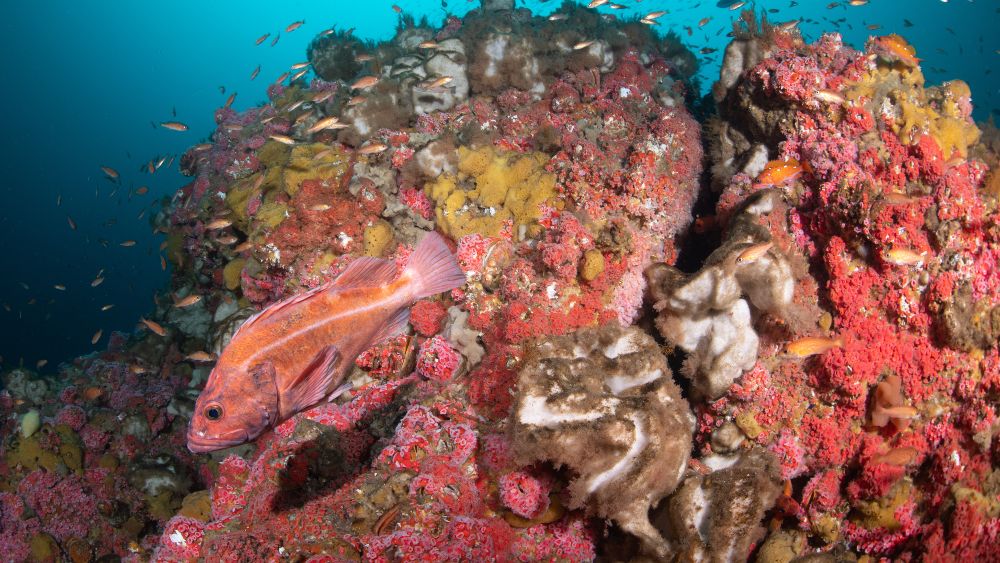
It’s no wonder that this is a treasure worth protecting — and doing so requires research and monitoring to acquire good data for resource managers. NOAA uses sanctuary condition reports as a standardized assessment tool. This report outlines trends in water quality, habitat, living resources, and ecosystem services from 2009 to 2021, and will provide information for the sanctuary management plan review process that begins in 2024.
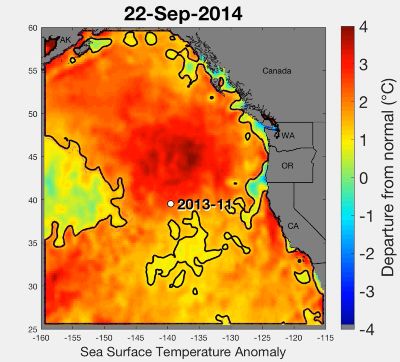
A Sanctuary Under Pressure
While the report focuses on several human-related impacts on the sanctuary, such as fishing, vessel activity, and marine debris, the main pressure on the resources within Cordell Bank National Marine Sanctuary is climate change, including warning signs and impacts such as ocean acidification, marine heatwaves, and harmful algal blooms.
Marine Heatwaves
As humans continue burning fossil fuels, excess carbon dioxide is released into the atmosphere at rates and in amounts that affect Earth’s systems. These excess gasses trap heat, and because of this, the global average sea surface temperature has been rising steadily for decades. On top of that, elevated sea surface temperature contributed to an increase in “marine heatwaves” — extreme temperature irregularities — observed along the U.S. West Coast.
The marine heatwave of 2014–2016 caused several noticeable impacts throughout Cordell Bank National Marine Sanctuary. For example, krill and copepods — types of zooplankton (tiny animals) — are important prey items near the bottom of the food web for whales, fish and seabirds. The report explains that the size and density of krill decreased during the heatwave period, and the less nutritious species of copepods became more abundant than the nutritious ones.
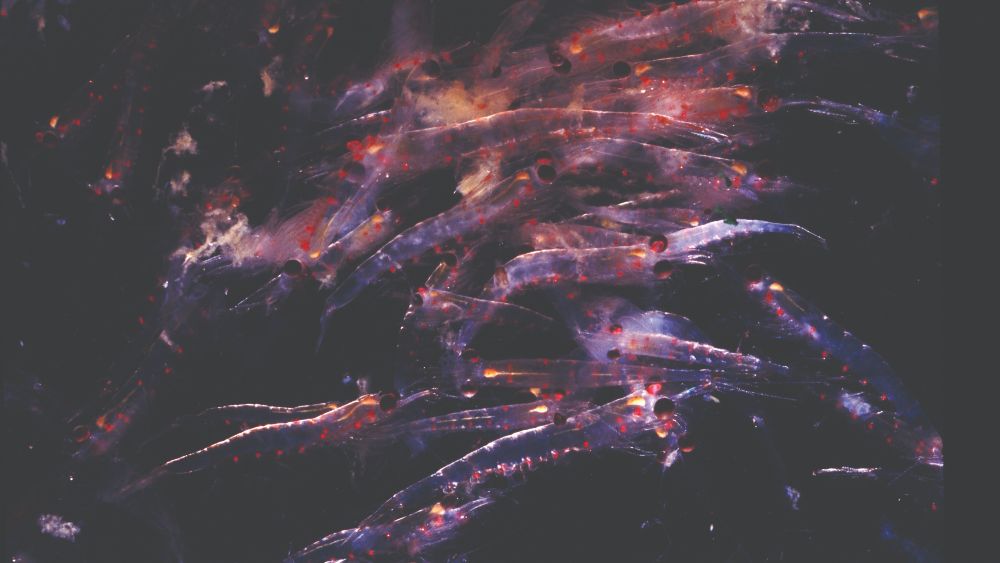
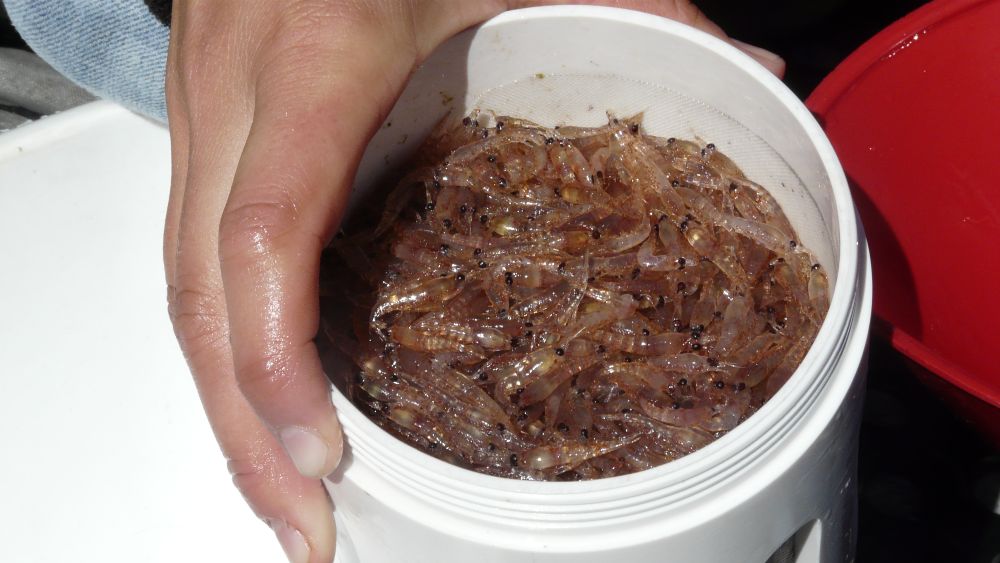
“This is an important warning sign that we want to pay attention to,” said Danielle Lipski, research ecologist at Greater Farallones and Cordell Bank National Marine Sanctuaries. “When there are less nutritious zooplankton available for wildlife up the food chain to eat, this can throw an ecosystem out of balance.”
In a marine ecosystem fueled by upwelling, marine heatwaves can also lead to “habitat compression,” where warm water offshore blocks cool, nutrient-rich water from reaching areas where it would naturally. The cool water instead gets crammed into a smaller nearshore area, rather than being spread out over the continental shelf and shelf break. When this occurred during the 2014–2016 marine heatwave, schooling fish became extremely abundant near the coast.
Dick Ogg, a commercial fisherman and member of the Greater Farallones and Cordell Bank National Marine Sanctuary Advisory Council, has been fishing in the area for about 50 years, primarily for salmon, crab, albacore tuna, black cod, and rockfish. Ogg says that habitat compression is a big issue for fishermen because “as the compression gets worse, the salmon come into the shoreline to feed on the krill, crab larvae, and anchovies that all became concentrated there.”
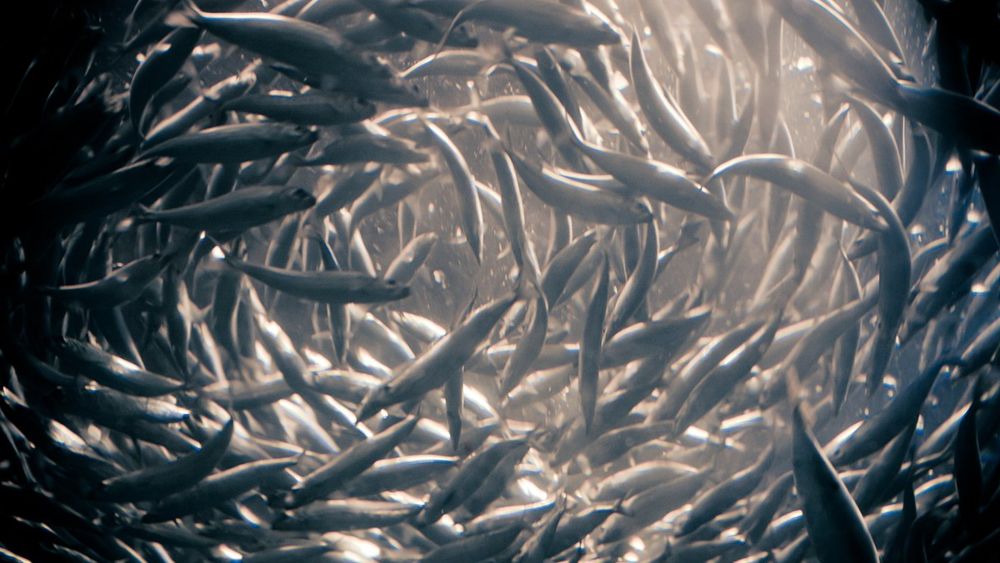
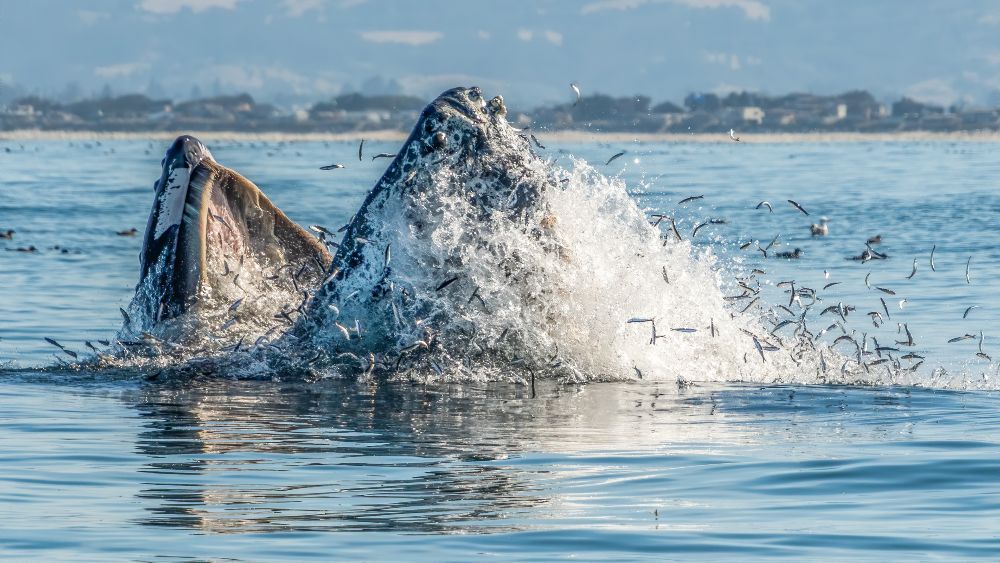
With prey concentrated near the coast, predators like humpback whales are also drawn closer to shore to feed, putting them at higher risk of threats from fishing gear entanglement and interactions with boats and ships.
Harmful Algal Blooms
Some phytoplankton create potent neurotoxins, such as domoic acid, which can cause physiological damage. When these species “bloom” in large numbers they can be harmful to wildlife and make some seafood unsafe to eat. Harmful algal blooms occur naturally within these nutrient-rich waters, but are made worse by increased temperatures. The 2014–2016 marine heatwave caused an extensive harmful algal bloom that threatened sanctuary resources, and the condition report notes that these occurrences are becoming more intense and frequent.
Toxins produced by harmful algal blooms are filtered from the water by animals like krill, copepods, and sponges. As mentioned previously, many marine mammals, fish, and seabirds rely on these invertebrates as a food source. “These toxins become more concentrated as they make their way up the food web,” explained Lipski. To assess the presence of biotoxins in the marine environment over time, researchers looked at records of sea lion strandings from domoic acid poisoning. The condition report explains that there were high numbers of stranded sea lions from 2009–2020 compared to strandings from 1998–2008 in the Cordell Bank National Marine Sanctuary region.
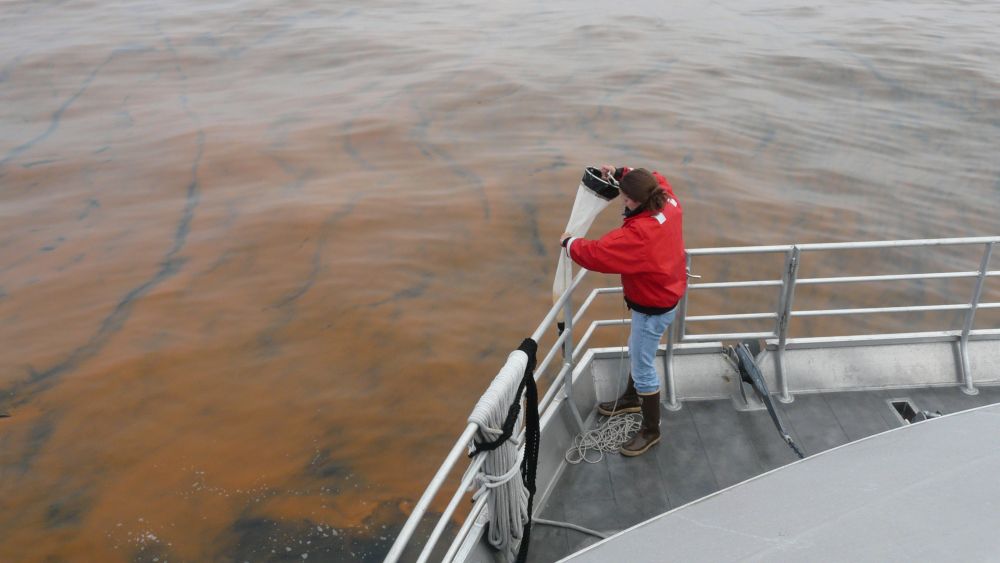
Harmful algal blooms can also impact human health and our economy. The report concluded that extensive harmful algal blooms during the 2014–2016 marine heatwave caused several fishery openings to be delayed or closed in multiple locations along the West Coast to prevent shellfish poisoning in humans.
Ocean Acidification
Another consequence of releasing too much carbon dioxide into the atmosphere is ocean acidification. The ocean absorbs about 30% of atmospheric carbon dioxide, and as a result of the increased carbon dissolved in the water, the chemistry of the ocean is changing. These chemical changes cause natural building blocks, like carbonate and aragonite, to be less available in the water column, making it harder for some organisms to build their shells and stony skeletons.
While corals and sponges are reported to be in overall good health, other calcifying marine organisms, like pteropods (tiny sea snails), are already being affected by ocean acidification in the sanctuary. Calcifiers are more likely to survive and reproduce when aragonite — one of the more soluble forms of calcium carbonate — is readily available in the marine environment. Water measurements from monitoring projects in Cordell Bank National Marine Sanctuary indicated that low aragonite saturation (a measurement of ocean acidification) conditions are present in the sanctuary, varying by location, depth, and time of year.
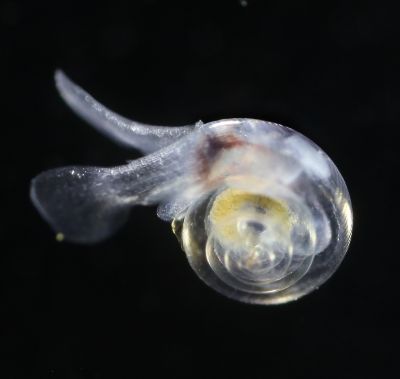
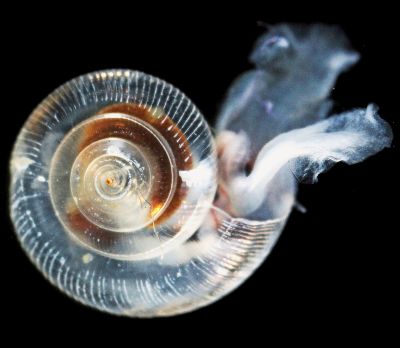
When multiple stressors are occuring all at once — increased temperatures, ocean acidification, and harmful algal blooms — the pressure on resources increases. “It is important to continue monitoring how the sanctuary is impacted by climate change,” said Lipski. “Resource managers cannot stop climate change, but we can find ways to reduce the non-climate stressors to help alleviate some of the pressure.”
Human Connections
Cordell Bank National Marine Sanctuary is a challenging place to visit due to its offshore location, however, many people are tied to the sanctuary through their connections with and appreciation for the wildlife it supports, such as humpback whales, seabirds, and deep-sea corals. The condition report listed education and sense of place as valuable ecosystem services provided by the sanctuary, and since very few can see this spectacular place in person, sanctuary staff and partners bring the sanctuary to people through live streaming of research expeditions, education programs, exhibits, media, virtual reality content, and more.
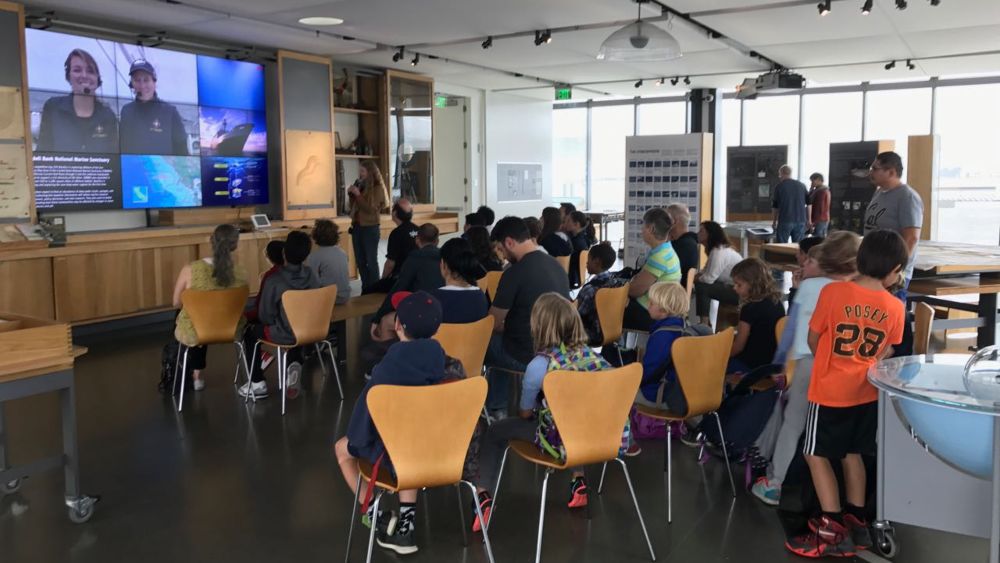
Among those who do venture into the waters of this special ocean place are fishermen. Although Cordell Bank National Marine Sanctuary does not manage fisheries, fishing in and around the sanctuary is a part of the sanctuary's heritage, and fishing is important to the local economy by supporting jobs and providing food.
The success of commercial and recreational fishing harvests depend on the health of sanctuary habitats and the fish stocks supported by the ecosystem. Climate change-related impacts such as habitat compression and fishery opening delays have affected fishing in the Cordell Bank National Marine Sanctuary region. However, some management actions have benefited fisheries, for example by allowing rockfish stocks to recover.
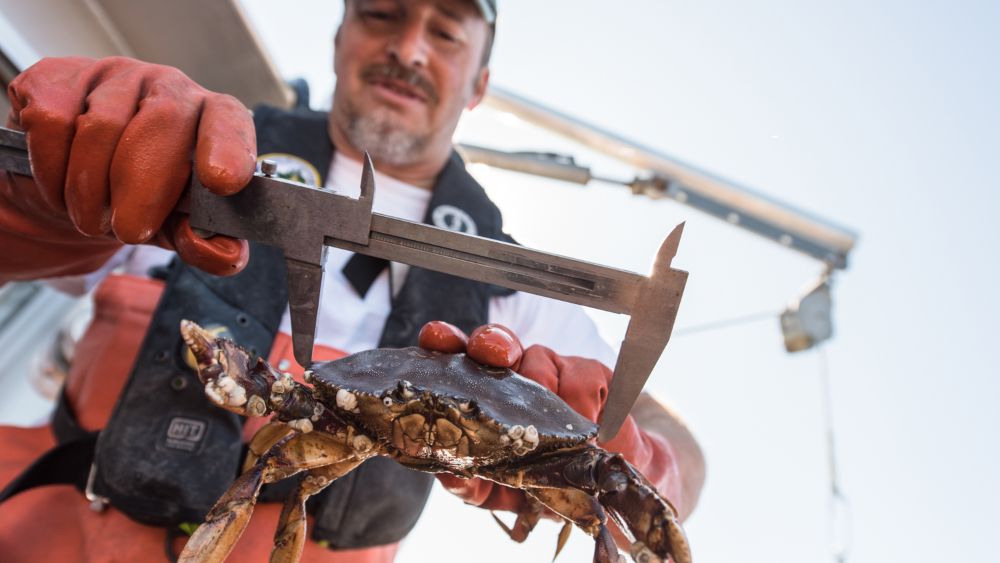
“What we’ve seen as fishermen is that the ability of these fish species to adapt [to climate change] has become less and less because these changes are becoming more and more frequent,” says Ogg. “Fishermen are observers. The better you observe, the better a fisherman you tend to be. So whether we’re looking at water temperature or currents, we have to observe those things to be able to be productive, catch fish, and provide a resource to people.” As Ogg explained, these changes throughout the marine environment are making it harder and harder to do that.
The condition report also notes that fishing can further impact sanctuary habitats and species through harvest, bycatch, seafloor impacts, lost gear, and wildlife entanglement.
Managing Resources in a Changing Ocean
NOAA uses sanctuary condition reports as a standardized tool to look holistically at the status and trends of national marine sanctuary resources and the positive benefits that people derive from these resources. The report is then used to determine whether management goals are being achieved and provide information for the upcoming sanctuary management plan review process.
“As we look to the future of this important ocean area — out of sight, but certainly not out of mind — it’s critical to monitor and track changes caused by climate change,” said Zac Canizzo, climate coordinator for NOAA’s Office of National Marine Sanctuaries. “By understanding how and how fast conditions are changing, we can then take management actions to help the resources within the sanctuary adapt to a changing ocean.”
This report is a critical step in a process to ensure Cordell Bank National Marine Sanctuary continues to be an important marine area for generations to come.
Rachel Plunkett is the writer/editor for NOAA's Office of National Marine Sanctuaries

